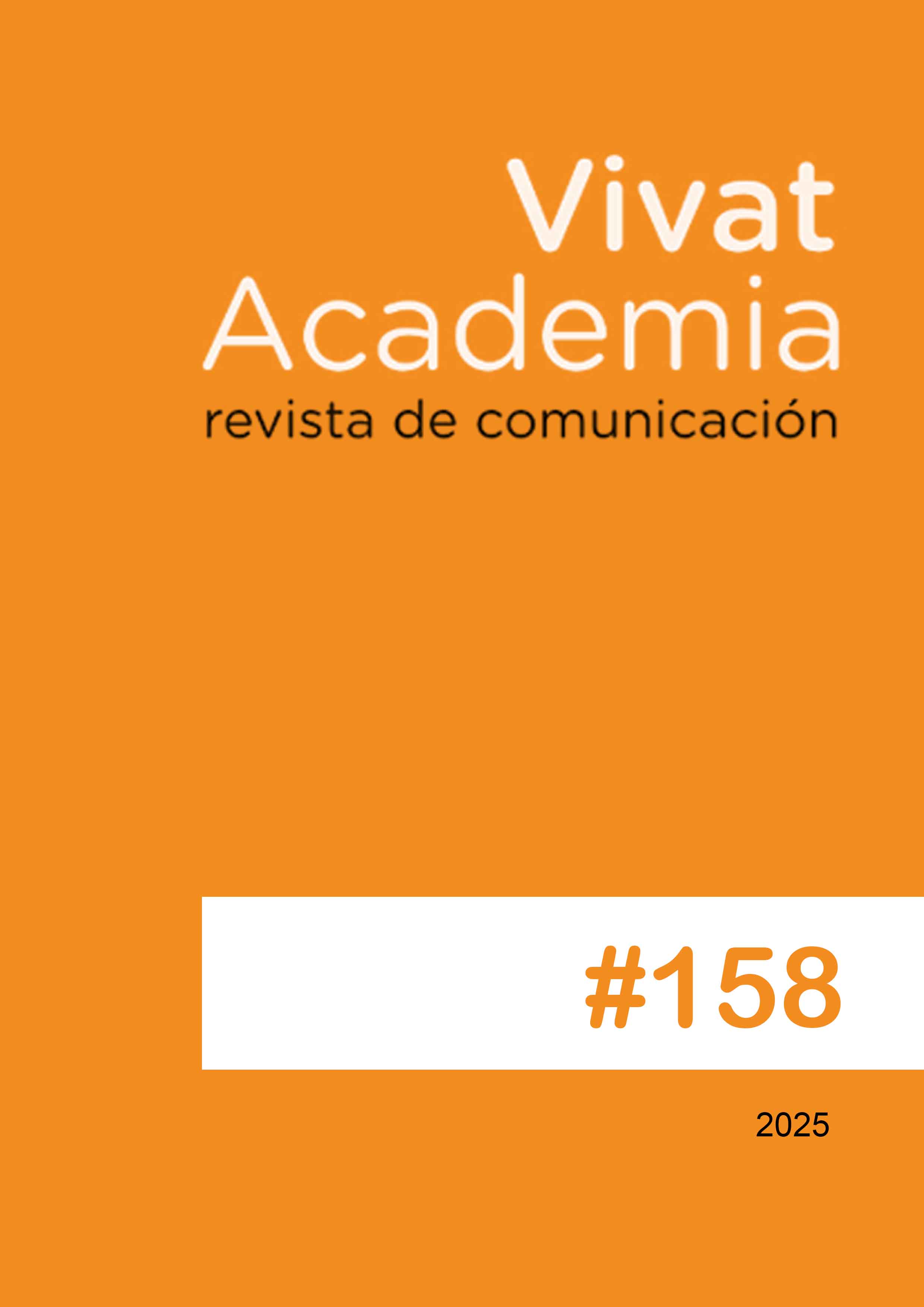Comunicación de riesgos y psicología sísmica: una investigación sobre las noticias de terremotos
Contenido principal del artículo
Resumen
Introducción: La comunicación de riesgos es una parte inseparable de cualquier respuesta inmediata. Los terremotos son emergencias complicadas que agravan los problemas de la comunicación de riesgos y ponen de relieve estas cuestiones sobre las que los científicos deben comunicar. Turquía es vulnerable a diversas catástrofes naturales, como terremotos, inundaciones, corrimientos de tierra y tormentas, debido a su situación geográfica y su clima. En el proceso de hacer frente a las catástrofes naturales, la concienciación y la comunicación sobre los riesgos se han convertido en aspectos cruciales. Metodología: El objetivo de este estudio es examinar cómo afecta el terremoto y la comunicación de riesgos a la sociedad con el método de análisis de contenido en el contexto de los terremotos de Kahramanmaraş, ocurridos el 6 de febrero. Se analizaron las noticias de cuatro sitios web de noticias en Internet con el método de análisis de contenido en el contexto de los terremotos centrados en Kahramanmaraş el 6 de febrero. Se realizaron análisis de frecuencia en el contexto de las preguntas y los temas de investigación determinados. Resultados: Como resultado del estudio, se constató que las noticias más mencionadas son las noticias sobre terremotos, las noticias con un tono informativo positivo y las noticias de agenda. La categoría informativa ocupa el primer lugar en la categoría de objetivos de publicación de noticias. Discusión: Cuando se analizan las noticias en función de su tono, se observa que las noticias con un tono positivo se sitúan por encima de las que tienen un tono negativo o neutro. Conclusiones: Esta investigación contribuye a avanzar en los campos de la comunicación de riesgos, la comunicación de catástrofes, la concienciación sobre riesgos y la psicología de terremotos y catástrofes.
Descargas
Detalles del artículo

Esta obra está bajo una licencia internacional Creative Commons Atribución-NoComercial-CompartirIgual 4.0.
Citas
Ainuddin, S., Routray, J. K., & Ainuddin, S. (2014). People's Risk Perception in Earthquake Prone Quetta City Of Baluchistan. International Journal of Disaster Risk Reduction, 7, 165-175. https://doi.org/10.1016/j.ijdrr.2013.10.006 DOI: https://doi.org/10.1016/j.ijdrr.2013.10.006
Ao, Y., Huang, K., Wang, Y., Wang, Q., & Martek, I. (2020). Influence of Built Environment and Risk Perception On Seismic Evacuation Behavior: Evidence From Rural Areas Affected By Wenchuan Earthquake. International Journal of Disaster Risk Reduction, 46, 101504. https://doi.org/10.1016/j.ijdrr.2020.101504 DOI: https://doi.org/10.1016/j.ijdrr.2020.101504
Ao, Y., Zhang, H., Yang, L., Wang, Y., Martek, I., & Wang, G. (2021). Impacts of earthquake knowledge and risk perception on earthquake preparedness of rural residents. Natural Hazards, 107(2), 1287-1310. https://doi.org/10.1007/s11069-021-04632-w DOI: https://doi.org/10.1007/s11069-021-04632-w
Bilgin, N. (2006). Sosyal Bilimlerde İçerik Analizi-Teknikler ve Örnek Çalışmalar. Siyasal Kitabevi.
Covello, V. T., von Winterfeldt, D., & Slovic, P. (1986). Risk Communication: A Review Of The Literature. Risk Abstracts, 3, 171-182. https://www.researchgate.net/profile/Paul-Slovic/publication/285817518_Risk_communication_A_review_of_the_literature/links/5d3cd952a6fdcc370a6609e3/Risk-communication-A-review-of-the-literature.pdf
Government of Türkiye. (2023a). AFAD Press Bulletin about the Earthquake in Kahramanmaraş-34. https://reliefweb.int/report/turkiye/afad-press-bulletin-about-earthquake-kahramanmaras-34-entr
Government of Türkiye. (2023b). AFAD Press Bulletin about the Earthquake in Kahramanmaras-8. https://reliefweb.int/report/turkiye/afad-press-bulletin-about-earthquake-kahramanmaras-8-entr
Herovic, E, Sellnow, T. L & Anthony, K. E. (2014). Risk Communication As Interacting Arguments: Viewing The L'Aquila Earthquake Disaster Through The Message Convergence Framework. Argumentation and Advocacy, 51(2), 73-86. https://doi.org/10.1080/00028533.2014.11821840 DOI: https://doi.org/10.1080/00028533.2014.11821840
Herovic, E., Sellnow, T. L., & Sellnow, D. D. (2020).Challenges and Opportunities For Pre-Crisis Emergency Risk Communication: Lessons Learned From The Earthquake Community. Journal of Risk Research, 23(3), 349-364. https://doi.org/10.1080/13669877.2019.1569097 DOI: https://doi.org/10.1080/13669877.2019.1569097
Jones, L. M. (2020). Empowering The Public With Earthquake Science. Nature Reviews Earth & Environment, 1(1), 2-3. https://doi.org/10.1038/s43017-019-0007-4 DOI: https://doi.org/10.1038/s43017-019-0007-4
Karancı, A. N., & İkizer, G. (2017). Afet Psikolojisi: Tarihçe, Temel İlkeler ve Uygulamaları.Türkiye Klinikleri Journal of Psychology-Special Topics, 2(3), 163-171. https://www.turkiyeklinikleri.com/article/en-afet-psikolojisi-tarihce-temel-lkeler-ve-uygulamalar-80104.html
Kavut, S. (2021). Digital Identities in The Context of Blockchain and Artificial Intelligence. Selçuk İletişim, 14(2), 529-548. https://doi.org/10.18094/josc.865641 DOI: https://doi.org/10.18094/josc.865641
Kavut, S. (2022). Sosyal, Teknolojik ve Psikolojik Boyutlarıyla Dijital Kimlik. Çizgi Kitabevi.
Kavut, S. (2024). Digital transformation of societies with the use of digital identity: a case study in Turkey. Obra Digital, 26, 97-116. https://doi.org/10.25029/od.2024.414.26 DOI: https://doi.org/10.25029/od.2024.414.26
Kavut, S.(2020). Kimliğin Dönüşümü: Dijital Kimlikler. Selçuk İletişim, 13(2), 987-1008. https://dergipark.org.tr/en/download/article-file/1183376
Kavut, S.(2023). Toplumsal yaşamda metaverse: Metaverse haberleri üzerine bir değerlendirme. TRT Akademi Dergisi, 8(17), 342-367. https://doi.org/10.37679/trta.1203028 DOI: https://doi.org/10.37679/trta.1203028
Koç-Akgül, S. (2017). Olağanüstü durumlar, iletişim ve habercilik yaklaşımları.TRT Akademi, 2(3), 6-47. https://dergipark.org.tr/tr/pub/trta/issue/28362/302071
Köroğlu, A. (2018). Doğal afetler sonrası yaşanan travmalar ve örnek bir psikoeğitim programı. Afet ve Risk Dergisi, 1(1), 39-52. https://doi.org/10.35341/afet.412005 DOI: https://doi.org/10.35341/afet.412005
Krippendorff, K. (1980). Validity in content analysis. En E. Mochmann (Ed.), Computerstrategien für die Kommunikationsanalyse (pp. 69-112). https://repository.upenn.edu/handle/20.500.14332/1940
Lambert, C. E. (2020). Earthquake Country: A Qualitative Analysis of Risk Communication via Facebook. Environmental Communication, 14(6), 744-757. https://doi.org/10.1080/17524032.2020.1719176 DOI: https://doi.org/10.1080/17524032.2020.1719176
Özkan, B., & Çetinkaya-Kutun, F. (2021). Afet psikolojisi. Sağlık Akademisyenleri Dergisi, 8(3), 249-256. https://dergipark.org.tr/tr/pub/sagakaderg/issue/64770/868877
Shah, A. A., Ullah, A. Mudimu, G. T., Khan, N. A., Khan, A., & Xu, C. (2023). Reconnoitering Ngos Strategies To Strengthen Disaster Risk Communication (DRC) in Pakistan: A Conventional Content Analysis Approach. Heliyon, 9(7). https://doi.org/10.1016/j.heliyon.2023.e17928 DOI: https://doi.org/10.1016/j.heliyon.2023.e17928
Sun, L, & Xue, L. (2020). Does Non‐Destructive Earthquake Experience Affect Risk Perception And Motivate Preparedness?. Journal of Contingencies and Crisis Management, 28(2), 122-130. https://doi.org/10.1111/1468-5973.12286 DOI: https://doi.org/10.1111/1468-5973.12286
Vicente, R., Ferreira, T. M., Maio, R., & Koch, H. (2014). Awareness, Perception, and Communication of Earthquake Risk in Portugal: Public Survey. Procedia Economics and Finance, 18, 271-278. https://doi.org/10.1016/S2212-5671(14)00940-X DOI: https://doi.org/10.1016/S2212-5671(14)00940-X
World Health Organization. (2017). Communicating Risk in Public Health Emergencies: A WHO Guideline For Emergency Risk Communication (ERC) Policy And Practice. https://www.ncbi.nlm.nih.gov/books/NBK540729/
Yildiz, A., Teeuw, R., Dickinson, J., & Roberts, J. (2020). Children's Earthquake Preparedness and Risk Perception: A Comparative Study Of Two Cities in Turkey, Using A Modified PRISM Approach. International Journal of Disaster Risk Reduction, 49, 101666. https://doi.org/10.1016/j.ijdrr.2020.101666 DOI: https://doi.org/10.1016/j.ijdrr.2020.101666
Zhang, L., Li, H. & Chen, K. (2020). Effective Risk Communication For Public Health Emergency: Reflection on The COVID-19 (2019- nCoV) Outbreak in Wuhan, China. Healthcare, 8(1), 64. https://doi.org/10.3390/healthcare8010064 DOI: https://doi.org/10.3390/healthcare8010064





